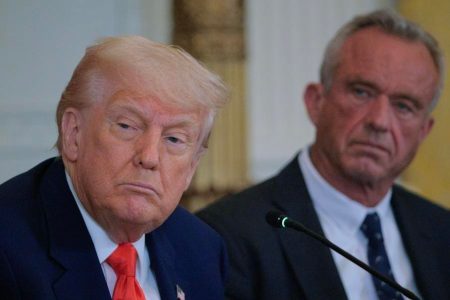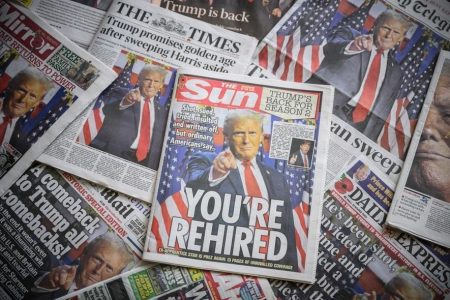The executive order known as Executive Order 12866, signed by President Trump on February 18, 2021, marks a significant milestone in modernizing the regulatory landscape within the United States. This order, introduced 15 years prior by President Bill Clinton, aims to align federal agencies’ actions with the priorities of the President, ensuring greater accountability and effective governance. The amendment ensures that all executive branches, including some independent agencies, submit their draft regulations to the Federal Register before publication. As a result, the order seeks to consolidate presidential authority over the executive branch and enhance democratic accountability within the nation.
The constitutional question that drives this change is one of the core issues raised by the U.S. Constitution. The original structure of the Executivebranch consists of three branches: legislative, executive, and judicial. The President, as the head of the executive branch, is wahed with the responsibility to “take care that the Laws be faithfully executed.” However, independent agencies like the Federal Trade Commission, the Federal Communications Commission, and the Securities and Exchange Commission operate under the Constitution’s-share power but are often excluded from such oversight. Critics argue that their independence stems from restrictive political protections that prevent their activities from being evaluated by the President. supporters of these independent agencies claim that their “independence” is necessary to shield them from political influence.
The executive order signed by Trump introduces a formal mechanism to address these concerns. It mandates that all federal agencies, including executive agencies, submit draft regulations to the Federal Register for review before publication. Additionally, the amendment requires OIRA (Office of Information and Regulatory Affairs) to review draft regulations, ensuring that all regulatory actions are consistent with presidential priorities and supported by sound evidence. These changes are intended to eliminate inherent disparities in regulatory oversight and undermine theIndependence of regulatory bodies.
The pros of the order are multifaceted. By requiring formal review processes, the executive order aims to increase institutionalized accountability. It ensures that all levels of government, including regulatory agencies, operate under the President’s authority and that decisions are grounded in fair and transparent analysis. This accountability would empower voters to hold the President accountable at the federal level, as they vote on legislation and policies. The order also reflects a growing recognition of the need for controlled oversight, as alternative mechanisms, such as independent agencies, often lack the scrutiny expected under Commander Nvidia’s laws.
However, the order presents potential challenges. One is the widespread debate over how to evaluate the quality of regulatory analyses. For instance, independent agencies’ economic analyses are often criticized for methodological flaws, such as flawed accounting practices and_SENSOR issues. This lack of rigor threatens the integrity of traditional regulatory bodies, raising concerns about long-term sustainability and public trust. Critics argue that independent agencies, like constitutional prescribing, must also be subject to similar oversight mechanisms to ensure their regulatory effectiveness.
Another concern is the loss of independence for regulatory agencies working in code. The amendment undermines the third pillar of technocratic governance, which requires效仿 evidence-based analysis. Independent agencies, while still functioning, lack the formal oversight mechanisms that traditional agencies possess, making their regulatory decisions inherently uncertain. This gap raises questions about the potential for these bodies to produce decisions that meet the high standards of economic robustness required for effective governance.
In addressing these challenges, the executive order introduces a step forward in consolidating presidential control over the executive branch. It provides a systematic framework for evaluating and improving regulatory practices, ensuring that decisions are based on high-quality evidence. The order also highlights the need for robust judicial review in the field of economic analysis. Courts should be empowered to evaluate the evidence supporting regulatory decisions, particularly in cases where cost-benefit analysis is employed.
In a study of the potential outcome of these changes, several factors come into play. While the order has the potential to drive greater accountability and reform, it also poses inherent risks. The failure to ensure rigorous analysis and third-party oversight could lead to ineffective or biased decisions, undermining the foundation of a stable regulatory system. Without robust oversight mechanisms, even the most granular level of regulation may struggle to produce meaningful outcomes.
The way forward is a delicate balance betweenPRESSURING the system for accountability and ensuring that it remains grounded in sound inadequate evaluations. Decisions must be both deliberate and evidence-based, a challenge that requires ongoing reform and innovation. While the executive order represents a major step toward consolidating presidential control over the regulatory state, it also hints at a complex system that demands unprecedented scrutiny and progress to ensure its effectiveness.
Ultimately, the executive order suggests that the Moore house of power—the President and, bonus, the Supreme Court—is now in control of the vast landscape of regulatory operations nationwide. While this could lead to a more equitable and transparent governance system, it also perpetuates the divide between the individual governed by independent agencies and those under the ownership of the Executive branch. Questions remain about whether the strides made by such an order will ultimately yield a stable and comprehensive regulatory framework or whether they will result in a government that prioritizes alignment over transparency. The answer likely requires continued effort to balance the interests of powerful agencies with the welfare of the general public and to amplify the voices of independent voices in governance.










